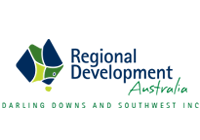Western Downs Regional Council area
Service age groups
In 2021, Western Downs Regional Council area had higher proportion of male children (under 18) and a lower proportion of males aged 60 or older than Southern Downs Regional Council area.
The Age Structure of Western Downs Regional Council area provides key insights into the level of demand for age based services and facilities such as child care. It is an indicator of Western Downs Regional Council area's residential role and function and how it is likely to change in the future.
Service age groups divide the population into age categories that reflect typical life-stages. They indicate the level of demand for services that target people at different stages in life and how that demand is changing.
To get a more complete picture Western Downs Regional Council area's Age Structure should be viewed in conjunction with Household Types and Dwelling Types.
Derived from the Census question:
'What is the person's date of birth or age?'
Total population
| Age structure - Service age groups | |||||||||
|---|---|---|---|---|---|---|---|---|---|
| Western Downs Regional Council area - Total males (Usual residence) | 2021 | 2006 | Change | ||||||
| Service age group (years) | Number | % | Southern Downs Regional Council area % | Number | % | Southern Downs Regional Council area % | 2006 to 2021 | ||
| Babies and pre-schoolers (0 to 4) | 1,156 | 6.7 | 5.0 | 1,103 | 7.7 | 7.1 | +53 | 1000 | 1000 |
| Primary schoolers (5 to 11) | 1,760 | 10.3 | 8.6 | 1,605 | 11.2 | 10.9 | +155 | 1001 | 1000 |
| Secondary schoolers (12 to 17) | 1,489 | 8.7 | 8.2 | 1,355 | 9.5 | 10.2 | +133 | 1002 | 1000 |
| Tertiary education and independence (18 to 24) | 1,403 | 8.2 | 7.0 | 1,100 | 7.7 | 7.0 | +302 | 1003 | 1000 |
| Young workforce (25 to 34) | 2,196 | 12.8 | 9.6 | 1,584 | 11.1 | 9.6 | +612 | 1004 | 1000 |
| Parents and homebuilders (35 to 49) | 2,992 | 17.4 | 14.6 | 2,971 | 20.8 | 19.2 | +21 | 1005 | 1000 |
| Older workers and pre-retirees (50 to 59) | 2,236 | 13.0 | 13.3 | 1,956 | 13.7 | 14.2 | +280 | 1006 | 1000 |
| Empty nesters and retirees (60 to 69) | 1,977 | 11.5 | 15.4 | 1,406 | 9.8 | 11.6 | +571 | 1007 | 1000 |
| Seniors (70 to 84) | 1,702 | 9.9 | 16.0 | 1,062 | 7.4 | 9.0 | +640 | 1008 | 1000 |
| Elderly aged (85 and over) | 238 | 1.4 | 2.3 | 174 | 1.2 | 1.3 | +64 | 1009 | 1000 |
| Total | 17,149 | 100.0 | 100.0 | 14,319 | 100.0 | 100.0 | +2,830 | ||
Source: Australian Bureau of Statistics, Census of Population and Housing (opens a new window) 2006 and 2021. Compiled and presented by .id (opens a new window)(informed decisions).
(Usual residence data)

Compiled and presented in profile.id by .id (informed decisions).

Compiled and presented in profile.id by .id (informed decisions).
Dominant groups
Analysis of the male service age groups of Western Downs Regional Council area in 2021 compared to Southern Downs Regional Council area shows that there was a higher proportion of males in the younger age groups (0 to 17 years) and a lower proportion of males in the older age groups (60+ years).
Overall, 25.7% of the male population was aged between 0 and 17, and 22.8% were aged 60 years and over, compared with 21.8% and 33.8% respectively for Southern Downs Regional Council area.
The major differences between the male age structure of Western Downs Regional Council area and Southern Downs Regional Council area were:
- A larger percentage of 'Young workforce' (12.8% compared to 9.6%)
- A larger percentage of 'Parents and homebuilders' (17.4% compared to 14.6%)
- A smaller percentage of 'Seniors' (9.9% compared to 16.0%)
- A smaller percentage of 'Empty nesters and retirees' (11.5% compared to 15.4%)
Emerging groups
From 2006 to 2021, Western Downs Regional Council area's male population increased by 2,830 people (19.8%). This represents an average annual population change of 1.21% per year over the period.
The largest changes in the male age structure in this area between 2006 and 2021 were in the age groups:
- Seniors (70 to 84) (+640 males)
- Young workforce (25 to 34) (+612 males)
- Empty nesters and retirees (60 to 69) (+571 males)
- Tertiary education and independence (18 to 24) (+302 males)
